He Found A Chest In His Grandpa’s Attic And In It Was Something Extraordinary
You never know what may be hiding in your attic. Seriously, when was the last time you were up there? We often put away things from our past that are left there for years and years without anyone remembering they were missing. This was the case for one Reddit users who found something pretty mysterious lurking in his grandfather's attic.
The Chest

In January of 2014, a Redditor we'll call ASW discovered a mysterious chest in his grandfather's attic. The chest looked like some sort of medical bag from a video game, and as mysterious as it was on the outside, he wasn't at all prepared for the incredible contents it held.
A Weird Inscription
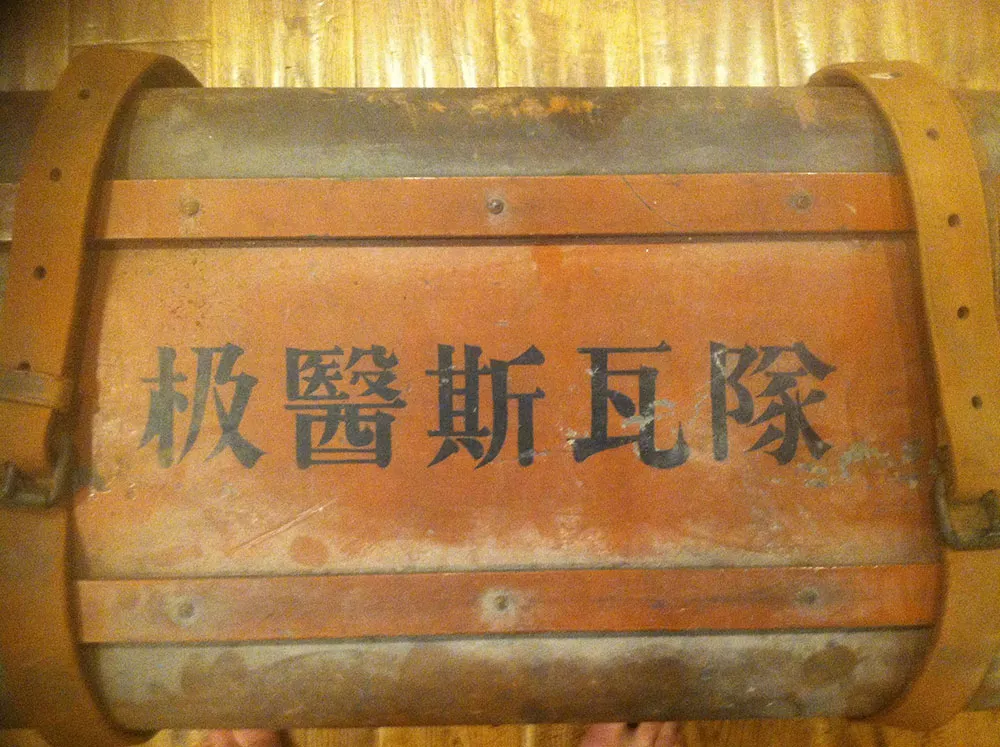
The chest appeared to have some sort of strange inscription on the back, which really piqued the Redditor's curiosity. He posted an image of the chest online with the Asian script. When translated, it was found that the script was, in fact, Japanese. A commenter who spoke the language said the words translated in English to "Damage Control Gas Aid Kit."
Another user, who saw the photos, insisted that he knew exactly where the chest came from. As a WWII reenactor, the poster was positive that it was a Japanese squad-level field medical kit from the 1930s. The kits were air and water tight, which is why the chest hadn't aged much at all.
Dating the Chest
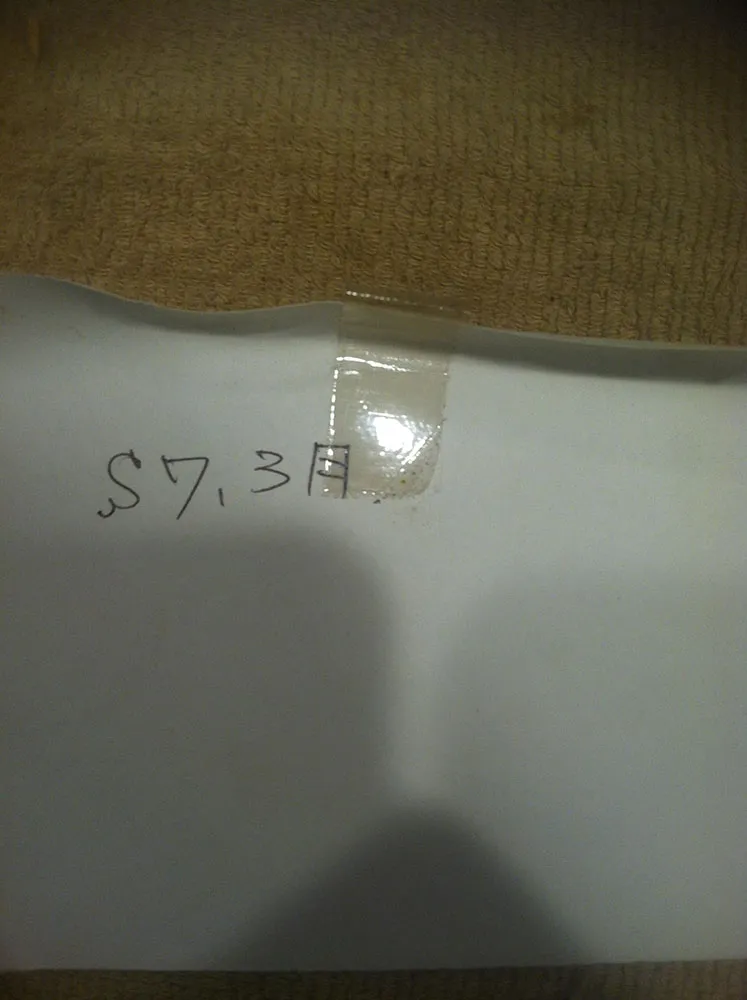
This mysterious chest became a bit of a project for some users on Reddit. Determined to find out where it came from, they pooled their resources and called everyone they knew. When combing through the chest, ASW found a note stuck on the inside which helped another user date the chest.
According to the user "S7.3月" meant "Shōwa, 7, 3rd month." In other words, the note was dated March 1932. "Shōwa" refers to the rule of Emperor Hirohito, who ruled Japan from 1926 all the way to 1989. This chest is a relic of that era and is about 80 years old.
The Mysterious Contents

The chest was in amazingly good condition, so it's no surprise that its contents were equally as well maintained. When ASW opened up the chest, he saw a bunch of packages stacked in layers. Whoever organized this (we're guessing his grandpa) had some serious organizational skills.
Among the several layers were boxes and pill bottles covered with Japanese text. One commenter suggested that ASW take one of each and report back the results. Of course, expired medication is unlikely to have any real effect. Though, it'd be remiss to not mention how dangerous it'd actually be to consume medication that was sitting in a box for 80 years.
Neatly Stacked Boxes

The medication inside this box could be so different from the medicines we administer to patients today. It really could have been anything. Methamphetamine (otherwise known as crystal meth) was commonly given to Kamikaze pilots during World War II before their suicide runs. It's also possible that it could have been cyanide (spies needed an out if they got caught rather than submit themselves to inhumane treatment and torture).
The neatly stacked boxes inside of the chest didn't really offer much information. ASW had to open up the boxes to see exactly what was there – and his discovery was totally weird.
A Strange Glass Bottle

Upon opening one of the boxes, the Redditor found a really strange vial filled with a brownish purple liquid. One commenter joked that by now, ASW was probably tasting colors. "It tasted purple," he said. "Ingredients: sugar, purple, water," wrote a user named TomSelleckPL. TomSelleckPL actually was sort of insightful in his joke. When translated, the text on the vial read "Gum Glucose Liquid." In other words, it was sugar water – plain and simple.
During WWII (and even in hospitals today), sugar water is administered through an IV to cure dehydration. In fact, when sugar water wasn't available during the throws of battle, WWII medics sometimes used coconut water, which we consume today as a healthy source of electrolytes and vitamins.
Mysterious Pills

Once the Redditor opened one of the boxes, it was time to move onto the pills. These pills could have been anything – from meth and cyanide to caffeine and vitamins. Of course, it turned out that there was nothing sinister about this medication. It was merely an 80-year-old cure for a common headache.
The pills turned out to be sodium salicylate mixed with caffeine. This is close to modern day Aspirin with added caffeine like Midol (however, we doubt there were many women in the battlefield during WWII). This non-steroidal, anti-inflammatory drug treats pain and fevers (and period cramps!).
Sedatives and Over-the-Counter Meds
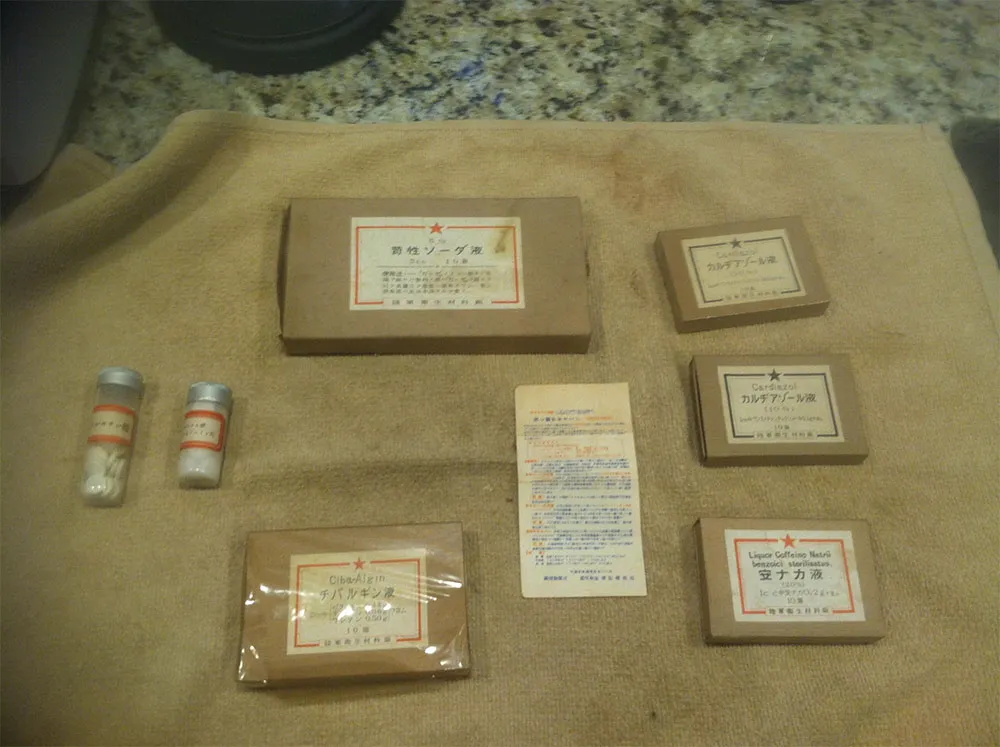
There was more than just some aspirin in this WWII-era Damage Control Gas Aid Kit. According to Reddit user Kevwillia, who was translating the Japanese text throughout the post, the box also contained some serious sedatives.
This pill bottle contained bromisoval (also known as bromovalerylurea). This over-the-counter Japanese medicine affects the nervous system and sensory organs. It also produces some sedative and hypnotic effects that can be used to treat anxiety. Of course, if you just suffered from a gas attack, you'd be more than a little anxious. Bromisoval is a perfect solution, but it also had many more uses.
Bromisoval Was a Staple in WWII Medication
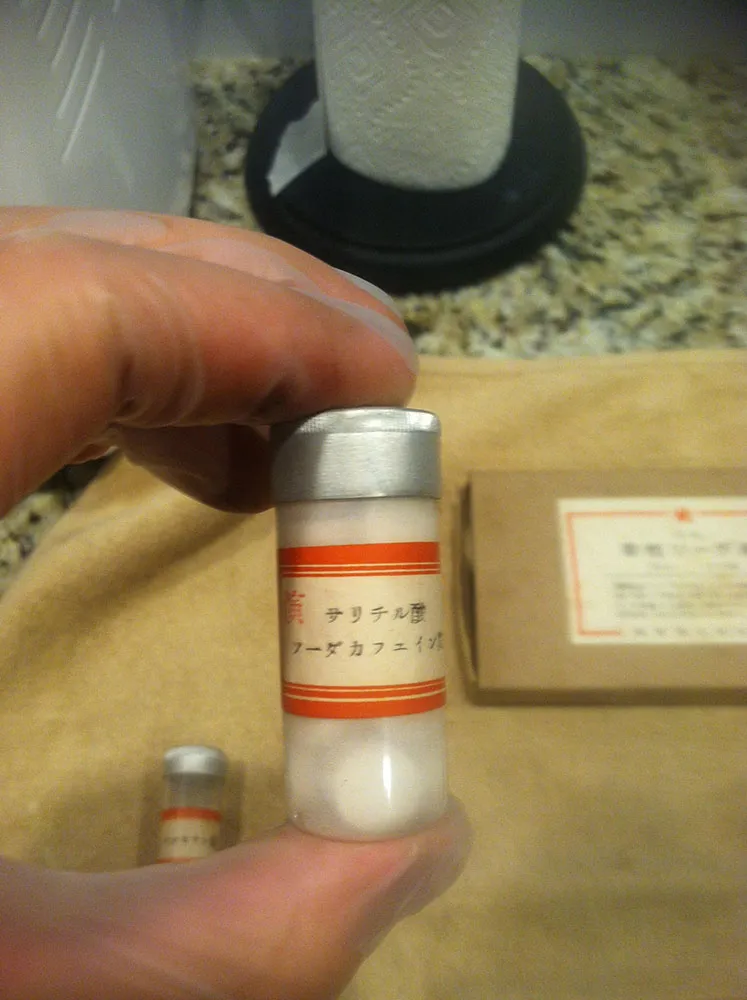
Bromisoval was commonly used by troops during World War II, and the U.S. used it to treat shell-shocked soldiers returning from the front lines. The drug is no longer used because it's way too powerful of a sedative and would greatly reduce a soldier's usefulness in the field (i.e. it's not a great medication to use if you're a medic treating patients as bombs are going off like the chest suggests).
Bromisoval was also used on prisoners of war. It was known as a truth serum because when soldiers were under the influence they would reveal information they normally would not. Unfortunately, its use for these purposes was discontinued because it was found that you could coerce people into recalling "false memories."
No WWII Medical Kit Is Complete without Novocain

Anyone who has ever been to a dentist and got a cavity filled is familiar with Novocain. Novocain (the brand name of the medication called procaine) is a brilliant local anesthetic. Odds are if you needed this during war things were pretty bad, which is probably why it was labeled in both Japanese and English (“Liquor Novocaini sterilisatus" is actually the Latin name for this product).
Novocain was developed by Alfred Einhorn in 1905 with hopes of treating surgical amputations – something soldiers, unfortunately, often had to go through after being wounded in battle. Of course, it turned out that since WWII, Novocain was found to be better-suited towards dentistry rather than amputation.
Never Underestimate the Importance of a Flashlight
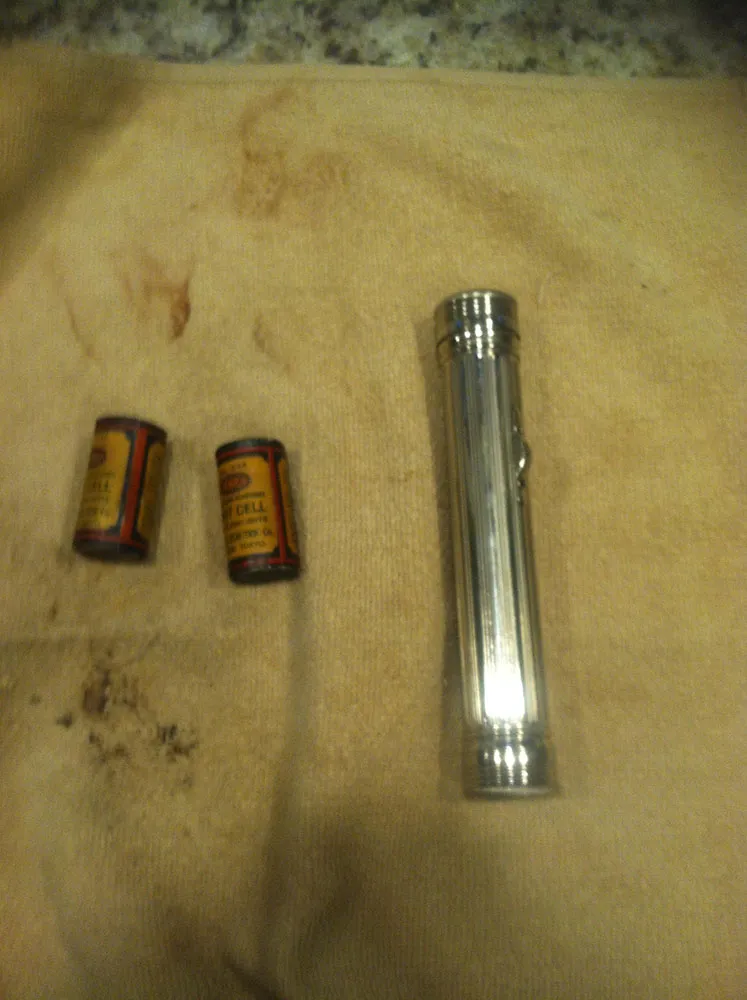
No emergency medical kit would be complete without a flashlight. Among the medicine found in the mysterious WWII emergency medical chest was a torch. The 80-year-old batteries look a bit like they've leaked acid everywhere, so we're hoping ASW didn't try to put them in the flashlight. The Redditor was wearing gloves, though, so he wasn't harmed by the fact that battery acid was leaking all over.
It turns out that flashlights haven't really changed very much since the 1930s. This chrome version is clearly a utilitarian model made designed to be able to withstand a beating.
Disposable Syringes Didn't Exist in 1932, But They Had This
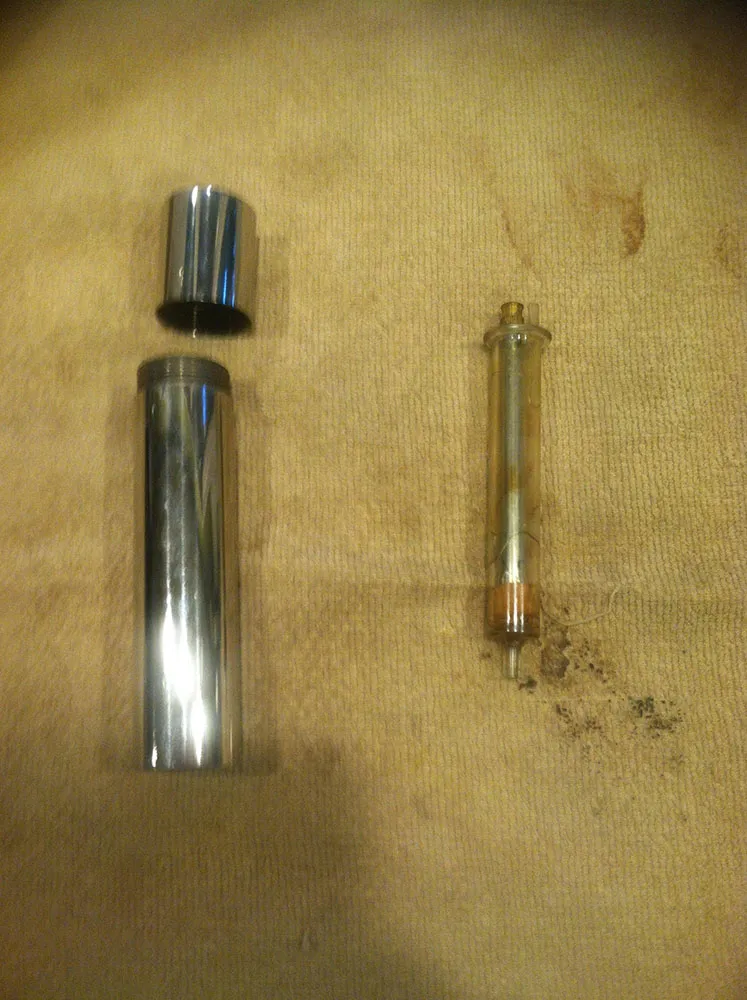
In 1932, much to the dismay of heroin users everywhere, disposal plastic syringes were not a thing. They hadn't been invented yet, so any intravenous kit was a bit more complicated.
The intravenous kit found within this Damage Control Gas Aid Kit does not look like something we'd have ever wanted to use. It's dirty, and there are rust-colored stains which could be attributed to the fact that it's 80 years old or maybe because it was used. Is it blood or is it oxidation from the metal plunger? We don't really know, but it's sort of gross. It's important to remember that during this time, doctors did not deadly blood-borne illnesses like HIV/AIDS.
The Second Layer of the Chest

The first layer of the chest was filled with common medications and things that would be helpful day-to-day. The second layer had an even larger assortment of bottles, jars, and packages. ASW removed these items one by one and had Redditors guess what they contained.
Unfortunately, this go-around was a bit harder. Kevwillia, who'd been translating the entire time, couldn't read most of the labels. He could only identify what was on the bottom row: two bottles of kerosene, a mask, medicinal carbon and a loofah. Some of the bottles even appeared to be empty.
Digitaminum
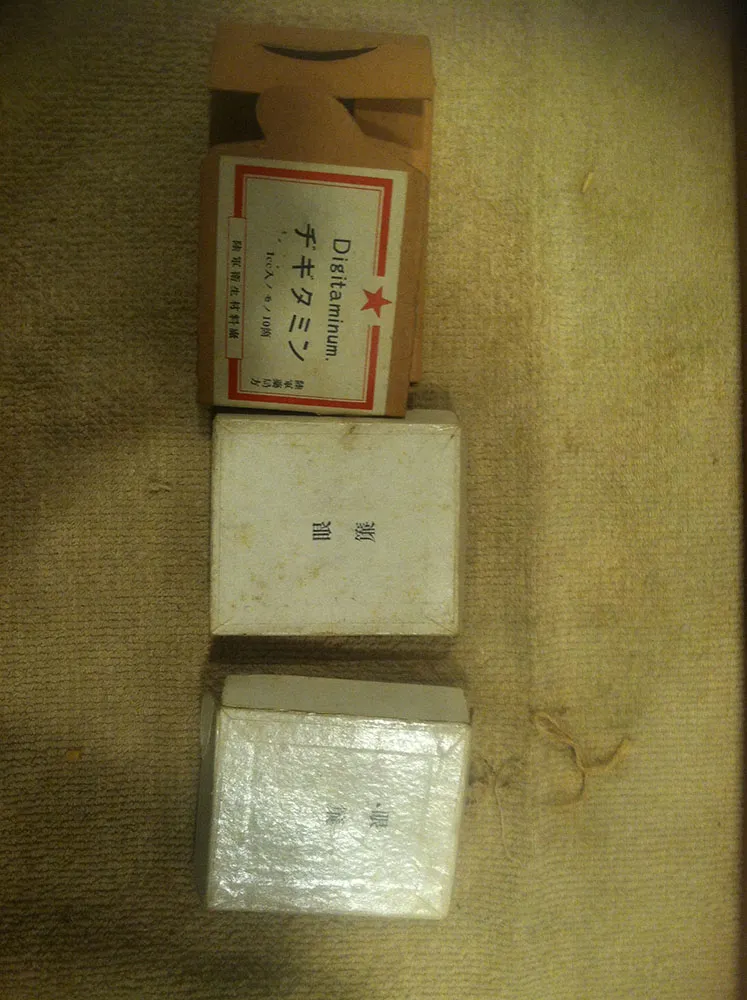
One of the boxes within the chest was labeled "Digitaminum." This was another Latin name, which translates to the drug digitalis. This medicine is extracted from foxglove flowers and saved many lives during WWII. Digitalis, or Foxglove, is most commonly used to treat irregular heartbeats (for example, if your heart is beating out of control because war is really terrifying and hectic). This helped thwart congestive heart failure -- it literally stopped a heart attack in its tracks and helped normalize a panicking heartbeat.
Foxglove is a very fragile herb. The cardiac glycosides that made the medicine so effective degraded rapidly if the plants were not handled with extra care. We're guessing 80-year-old foxglove would have no effect.
A Little Black Box
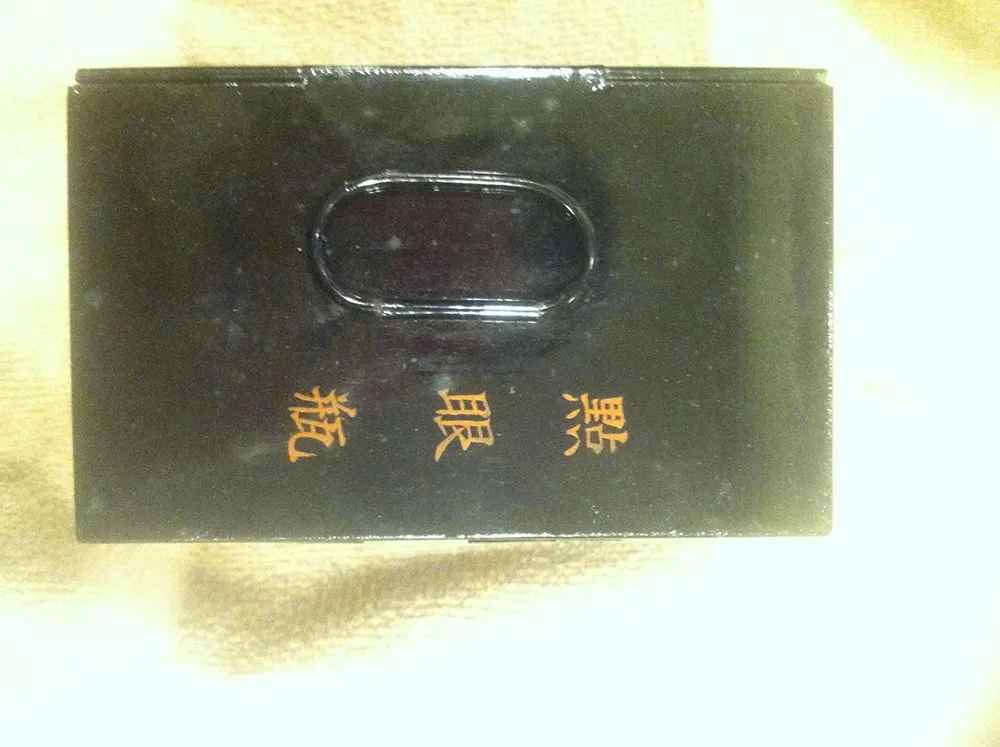
Just when you thought the contents of the chest couldn't get any more mysterious, ASW pulled out a little black box etched with mysterious Japanese characters. The box puzzled Redditors, who were still waiting for ASW to stumble upon crystal meth used in kamikaze pilots or something else that was scandalous and sinister.
Who knew war supplies more-or-less have remained the same throughout the last 80 years? Aspirin, local anesthetics – even a loofah – everyone was waiting for the good stuff. Seriously, where were all the things used to treat nerve gas poisoning if this was a gas aid kit?
Adrenaline, Novocaine, Atropine

Upon opening the little black box, ASW found a note taped to the lid. According to Reddit's apparent resident Japanese translator Kevwillia, the note said: "Adrenaline, novocaine, atropine." Adrenaline's effect is similar to the methamphetamine Redditors were waiting to find, but hardly as interesting. It wasn't used for Kamikaze pilots, but rather to fight fatigue and increase soldiers' alertness. It was also used for things like amputations and treatment for nerve gas poisoning. A high dose of novocaine or morphine (which helped with the pain, but was a pretty heavy drug) would be counteracted with adrenaline so the soldiers could still function.
Atropine for Nerve Gas Poisoning
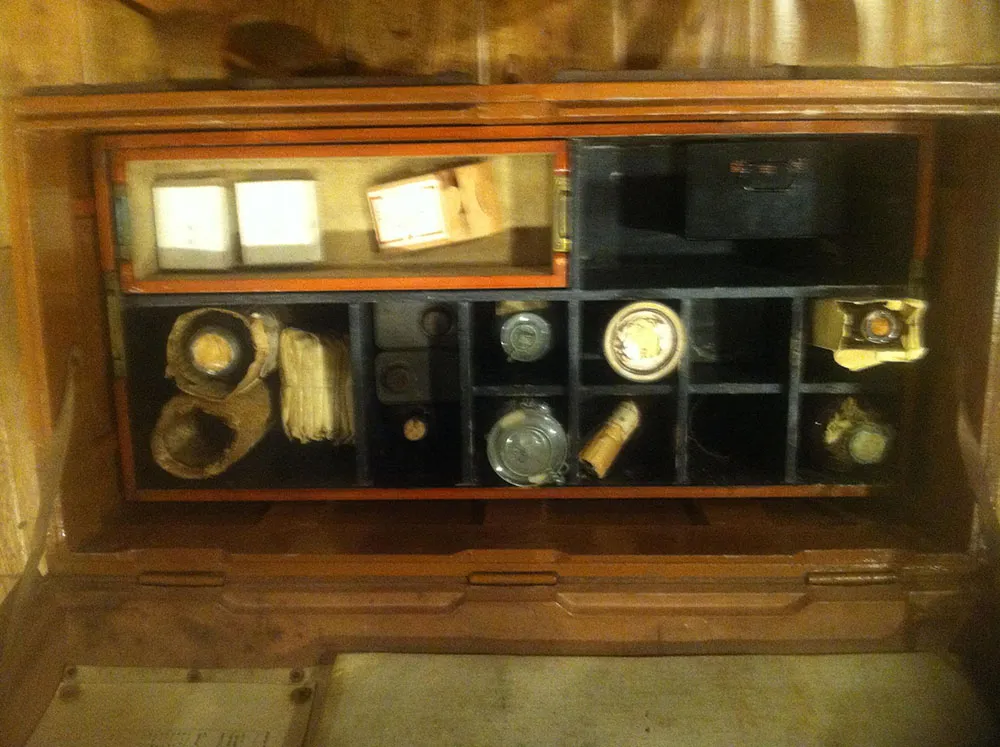
Out of all the drugs found by ASW, Atropine is perhaps the most telling of its time. This medicine was really, really strong and mainly used to treat poisoning by nerve gas. The chemical compound that makes up Atropine is found in jimson weed, which can induce horrifying, life-changing hallucinations.
This was not the case for Atropine in a medical sense. It's essentially the opposite of adrenaline and can slow the heart rate and decrease saliva production during surgery. Primarily, during WWII, it was used to treat types of nerve agent and pesticide poisoning, but also helped slow the heart rate when it was necessary.
Weird Bottles Inside of the Box

So, ASW found a note that said the box contained a number of drugs used to help with nerve gas poisoning. That's something we could expect from a box labeled "Damage Control Gas Aid Kit," but things got stranger from there.
Inside the little black box were some weird glass vessels that no one on Reddit knew anything about. Users thought it was possible that these bulbs were used in cupping therapy. This ancient Chinese, homeopathic treatment loosens muscles, encourages blood flow and sedates the nervous system. Since the kit also contained medicines used to slow heart rate, it's possible that this was offered as an alternative treatment. Cupping is also known to relieve back and neck pain and stiff muscles, as well as cure a variety of ailments like anxiety, migraines, and fatigue. These ailments were common among WWII soldiers.
The Final Layer
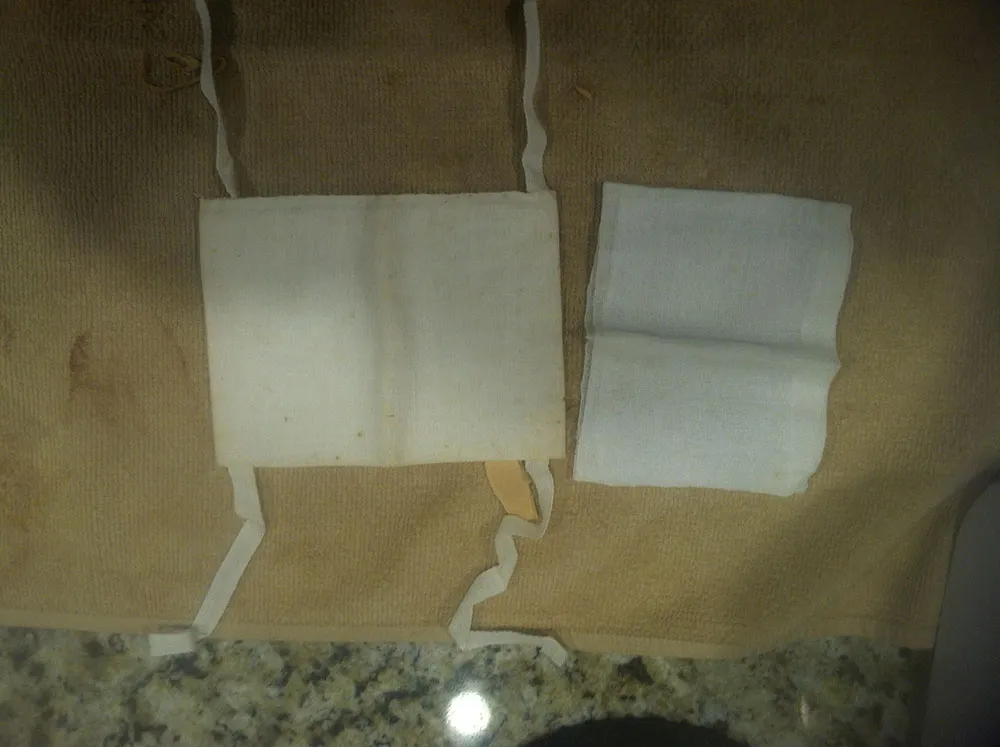
The final layer of the box had some suspicious-looking packets. These turned out to be nothing more than medical masks (if you were subject to leagues of sick soldiers as well as toxic gas, you can bet these masks were an asset).
One Redditor also believed that this box contained Caustic Soda (otherwise known as Sodium Hydroxide). This could be crucial in gas attacks because it absorbs moisture and carbon dioxide. It was often impossible to prevent things from getting wet as a medic on the field because you were subject to whatever weather was currently happening. At least you could use caustic soda to help keep things dry and sanitary.
Missing From the Kit
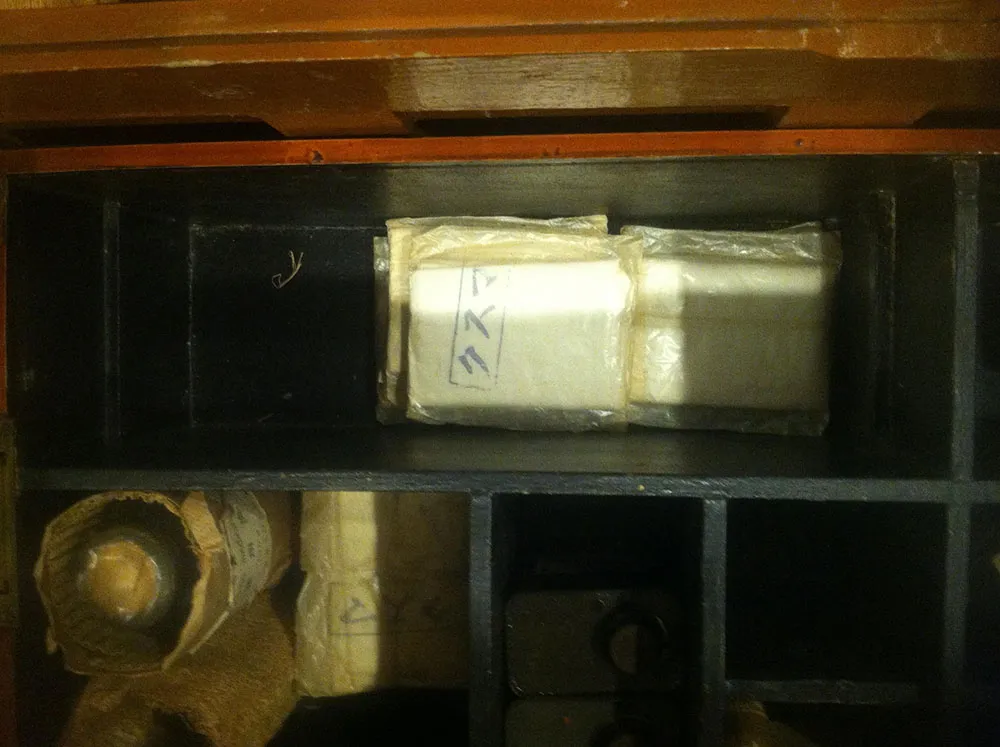
There were a couple things Redditors thought were missing from the kit. There were so many specific medicines that were commonly used to aid during amputations yet there was not a single physical surgical tool. There was no bone saw or scalpel and no antiseptic.
Redditors also thought, though they could not verify, that one of the bottles was labeled "opium." If this was the case, the lack of a bone saw is even more shocking. Morphine is the most active substance in opium and it's also a very powerful painkiller. This was frequently used in WWII for amputees, but also for victims of nerve gas poisoning. Perhaps this kit was truly made for specifically treating victims of nerve gas and not at all for general medical treatment. Nevertheless, the unboxing was a success and interesting trip through world history.
An Extremely Rare Map Of Hitler's Bombing Target

An extremely rare map of Hitler's bombing targets was discovered in an attic nearly 75 years after World War II ended. The map originally belonged to a Luftwaffe navigator and it highlights some of the buildings and infrastructure Hitler planned to destroy. The most notable targets are the Duke of York's headquarters and Fulham Palace, the home of the Bishop of London. Despite his desire to do whatever it took to win the war, Hitler's men crossed off hospitals with red x's, telling pilots they were not to be destroyed. The map was auctioned off after it was discovered in a residential home's attic.
Churchill's Half-Smoked Cigar

Christian Williams was a little bit confused when his grandfather found an old cigar in his attic and insisted his grandson take it home with him. The long forgotten relic, though, wasn't your typical cigar. Williams' grandfather was a butler for Churchill and he took the cigar after the fearless leader completed a meeting between Allied leaders at Casablanca during WW2. The 70-year-old cigar might not taste great after seven decades but it still has a value of more than $1,000. Let's forget the cost of the cigar for a moment and just revel in the fact that it once belongs to one of the most powerful men in the world!
The Only Color Film Footage From WWII

The only known Allied color footage of World War II was uncovered in the attic of a famous Hollywood director. Film director George Stevens, who directed the likes of Fred Astaire, Gingers Rogers, and Cary Grant, had stored the footage in his attic and left it there until his son rediscovered the colored film. Stevens enlisted in the armed forces after seeing Leni Riefenstahl’s Nazi propaganda movies. Shortly after he enlisted, General Dwight Eisenhower assigned him to head up combat motion-picture coverage. Eisenhower had Stevens shooting film footage in black and white but he brought his own 16-millimeter camera and boxes of Kodachrome film to film his own personal diary of the war.
A World War II Panic Room
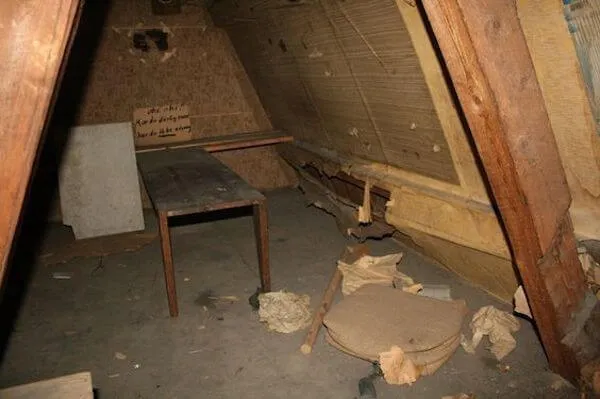
A group of Norwegian students was staying in an old home in Norway when their landlord tipped them off about a possible hidden room in the home's attic. A secret doorway was soon discovered and inside they found a hidden space. The room contained a table, an alarm and a map showing of Britain and northern France which was likely used to track allied and axis force positions. A note written in Norwegian warns: "If you have a bad stomach, you do not have access." The "bolt hole" room quickly drew comparisons to the type of conditions Anne Frank and her family lived in during World War II.
A Film Editor, Medicine, And More...

Imgur user dtrosenb was looking through his great-grandfather's attic when he discovered a case containing a bunch of unique World War II items. He didn't have a key for the chest so he broke open the locked check out of pure excitement. Among the items discovered was a machine to make shotgun shells (top left), coins from the 1800s (top right), an 8mm film editor (bottom left) and laudanum, a powerful opiate that can easily lead to death by overdose. There was also a book about sex education and a bunch of yet to be processed 8mm film canisters that were perfectly preserved.
The Famous Artwork Of Evelyn Dunbar

Evelyn Dunbar, the UK’s only salaried female wartime artist passed away in 1960 and her studio was quickly dismantled with her artwork being given out to family and friends. The paintings were discovered in a farmhouse attics by Ro Dunbar, the painter’s niece. Ro decided to check the attic after seeing the value attached to painting on Antique's Roadshow. The discovered paintings included commissioned works Dunbar created during World War II for the Women’s Land Army. The paintings were quickly placed into an exhibit so the artist could finally get the recognition he rightfully deserves. The painting shown above is a self-portrait of Evelyn Dunbar.
An Entire Box Of Memorabilia Discovered In Maryland

In November 2015 an unidentified man walked into a Maryland police station and handed over a box of World War II memorabilia he claimed to have found in his attic. Police investigated the items and determined they belonged to a man who immigrated to the United States from the Philippines. They were also able to determine he was a member of the Navy. "His name does show up in a record from the Truman Library of him being on board the USS Williamsburg which was Harry Truman's presidential yacht but other than that we haven't seen it pop up anywhere," the police report determined. Included in the box were letters, telegrams, a cartoon clip from the 1940s, and various other items.
A Perfectly Preserved WWWII Item Was Found In An Attic
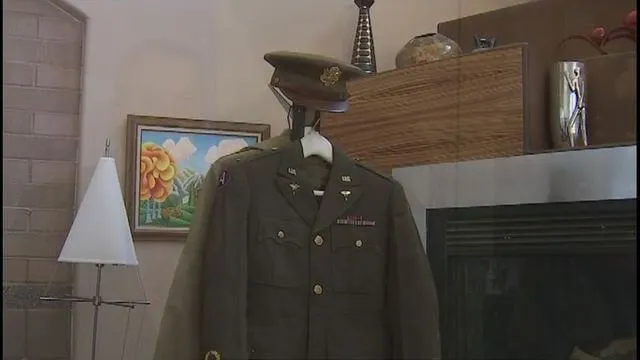
A home renovation in Phoenix, Arizona led to the discovery of a mint condition World War II uniform. The new homeowner was immediately convinced that it was his job to track down the family of the uniform's owner, a mission he accomplished. The man soon discovered that the veteran and his family lived in the home for more than 50 fifty years. There are many worn down World War II uniforms available in pawn shops and other locations. What stood out about this uniform was its pristine condition right down to the shine of its pins. Also discovered were uniforms from WWII, an old checkbook, and wooden shoes from Holland.
A Collection Of World War II Propaganda Posters
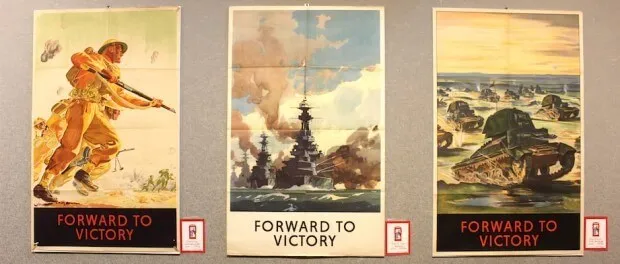
Dan Field understands the type of valuables that can be found in an attic. Dan is an antique dealer who managed his own firsthand account of unearthing a piece of history while helping a family search their attic for priceless artifacts. After opening a chest, a common storage option among World War II veterans, he found dozens of old propaganda posters. “In finding these, it’s like finding a World War II time capsule,” Field said. “Even though there are all these scenes of battlefront victories – air battles, tank battles, naval battles – all of that was really intended to prop up the home front.” Most of the posters were focused on encouraging British citizens to join the military.
Live Hand Grenades In An Attic? No Thanks.

A Milwaukee man was shocked when he started exploring his attic in March 2014 and discovered a military case that held four live hand grenades. The Milwaukee Sheriff's Office was immediately called and a bomb squad was sent to the home to retrieve the hand grenades. Police spent a few hours carefully examining the box before extracting the explosives. The bomb squad proceeded to take the dangerous hand grenades to a remote area in Oak Creek, Milwaukee where they detonated the explosives. The munitions were still operational which could have injured or killed the homeowner if they remained in the home indefinitely.
The Lost WWII Warship
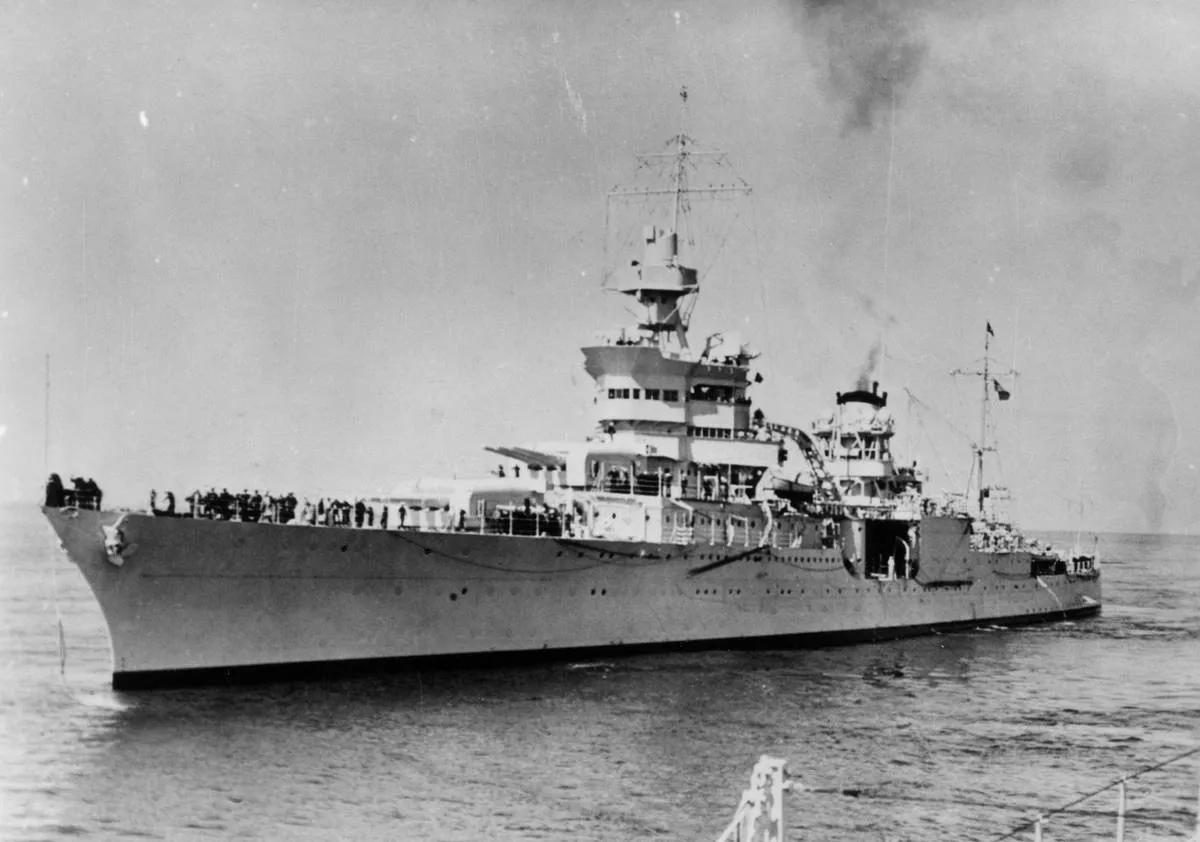
In 2017, a lost United States warship was found where it had laid in its watery grave since WWII, a span of 72 years. The ship in question? The USS Indianapolis. To most people they might be most familiar with the tale of the ship from the monologue seen in the Steven Spielberg classic, “Jaws”. Robert Shaw as the steely boat captain “Quint” tells a powerful monologue in the film about his experience aboard the famed cruiser. In 1945, the ship was delivering parts of the United States’ first ever atomic bomb, which would eventually hit Hiroshima, when it was torpedoed by the Imperial Japanese Navy.
The Tragic Fate Of The Indianapolis

Allegedly, the ship sank within 8 brief minutes. There was a total of 1,196 people aboard the ship. In the immediate aftermath, around 300 of the crewmen sank with the ship, the rest, an estimated 900 faced a horrifying fate. Many of the crewmen faced exposure, saltwater poisoning, and dehydration. As the lore goes, many of the men were also killed by shark attacks. Only 317 of the 900 ended up surviving the horrifying event. However, the people of the United States never forgot about the ship or the horrible fate that it’s crew succumbed to. One such person was Paul Allen, Microsoft co-founder, who organized an expedition to locate the ship once and for all.
Seventy-Two Years Later

While for many years, people estimated the area of where the remains of the USS Indianapolis lay, it had never been discovered. Paul Allen organized a team of researchers and in August of 2017 he announced that they had found the ship. It was at the bottom of the North Pacific Ocean, nearly 5,500 meters deep. Allen announced the discovery in a press release saying, “To be able to honor the brave men of the USS Indianapolis and their families through the discovery of a ship that played such a significant role during World War II is truly humbling. As Americans, we all owe a debt of gratitude to the crew for their courage, persistence and sacrifice in the face of horrendous circumstances.”
The Final Resting Place
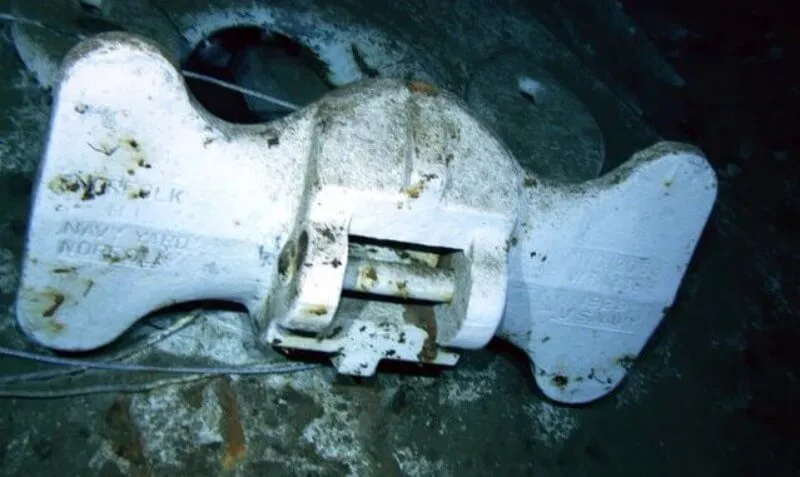
The Indianapolis was hit on July 30th 1945 and since that day, it had lay at the bottom of the ocean. Paul Allen owns a ship called the R/V Petrel. He had the ship renovated with state of the art technology. It is able to venture a remarkable 6000 meters below the sea, allowing it to discover astonishing finds such as the long-lost USS Indianapolis. This is not he first find for Allen’s special vessel, the ship also discovered the Japanese battleship called the Musashi in 2015 and in 2017 it also discovered the Italian WWII destroyer the Artigliere. In these remarkable photos were taken with a remotely operate subversive vehicle. In the photo, you can see the anchor of the ship which was emblazoned with “U.S. Navy”.
The Remarkable Recovery Team
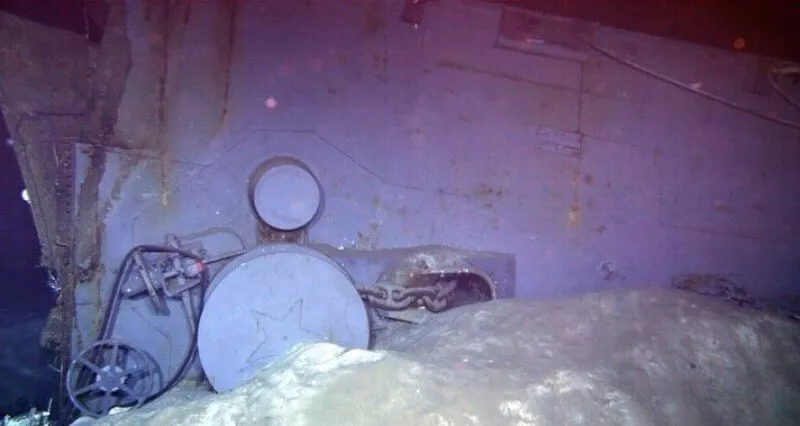
In order for Paul Allen’s team to undertake such a fascinating endeavor, he needed to have the best researches in the world at his side. One such person was historian Richard Hulver, who works with the Naval History and Heritage Command. Through Hulver’s many years of detailed research, the team was able to pinpoint where they thought the final resting place of the ship would be and pinpoint the exact location. One particularly useful piece of information, was an account Hulver recovered of a person who had an encounter with the ship not long before it was torpedoed and sank. This account made it possible for August’s fascinating discovery. The United States Navy will preserve the wreckage although the exact location of the discovery will be kept private.
An Innocent School Project
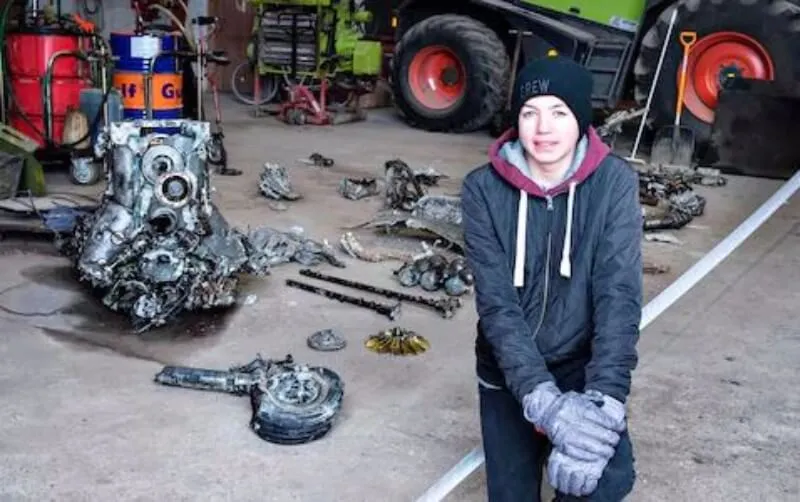
2017 seems to be quite the year for amazing WWII finds. Yet another never before seen piece of WWII history was uncovered by the surprising target of a 14-year-old boy named Daniel Kristiansen. Daniel was undertaking what seemed to be a simple history project for school. For him, he was assigned to work on a project about WWII. As it turns out, within the family there as actually a tale that a German plane had once crashed on the family farm that had been passed down from generation to generation. Daniel’s father joke that perhaps Daniel should try to find the plane for his project. And thus, a fantastic journey began.
Hidden In A Swamp

Daniel’s father remembered his own grandfather telling him childhood stories about a plane that had crashed on the farm during WWII. However, the grandfather also recounted that the plane was moved. Despite the tale, Daniel and his father decided to take out some metal detectors to search the family farm located in Arabybro, Denmark. Daniel’s father thought that perhaps they would find a piece of scrap metal that could be traced back to a plane. As they searched the land, suddenly their metal detectors began to set off maniacally beeping. The area was quite swamp like so the two began to dig to see what might lay underneath the mud.
A Mystery Unearthed

The father and son soon realized that they would need something a bit more heavy-duty in order to find what lay beneath the land. They turned to a neighbor and borrowed his excavator. As soon as they began using the piece of machinery, the duo was astounded when pieces of a plane began to surface. At first it looked like pieces of metal, but soon it became clear what they were looking at. A motor surfaced and the two realized without a doubt that the old family story was true. However, it was what was found next that was one of the most unbelievable historical finds ever.
Laid To Rest

Daniel’s father, Klaus Kristiansen spoke to BBC about the astounding find, he also revealed the unexpected reality that came with the pieces of metal. Klaus said, “In the first moment it was not a plane. It was maybe 2,000 to 5,000 pieces of a plane. And we found a motor...then suddenly we found parts of bones, and parts from [the pilot’s] clothes.” The German airmen who went down with his plane, was still at rest with his aircraft. The plane was a ME 109 Messerschmitt which was widely used by Germany during the war.
The father and son duo were able to find the parts of the plane including the engine and munitions. Unexpectedly, they also found artifacts of a real person including his personal items with his wallet which still had money inside. They also found a booklet which has been thought to be a Bible. Daniel revealed that rather unnerving discovery of the pilot’s body in an interview with DRP4 saying, “It was pretty wild to find bones and spine from the dead pilot.”
The Most Amazing School Assignment Ever

The remains of the German soldier had laid to rest in the aircraft for some seventy years, undisturbed. Klaus Kristiansen said that he and his son quickly attempted to secure the amazing discovery they uncovered. They immediately contacted their local authorities as well as some WWII historians. The authorities later secured the site. Klaus recounted, “We didn’t touch it, we just put it in some bags. A museum is now taking care of it. I think there’s a lot of information in those papers.” It is hoped that the remains of the pilot will be able to be identified and perhaps even returned to surviving members of the family. One thing is for sure, Daniel certainly had an excellent history lesson about WWII.
Lascaux Cave Paintings
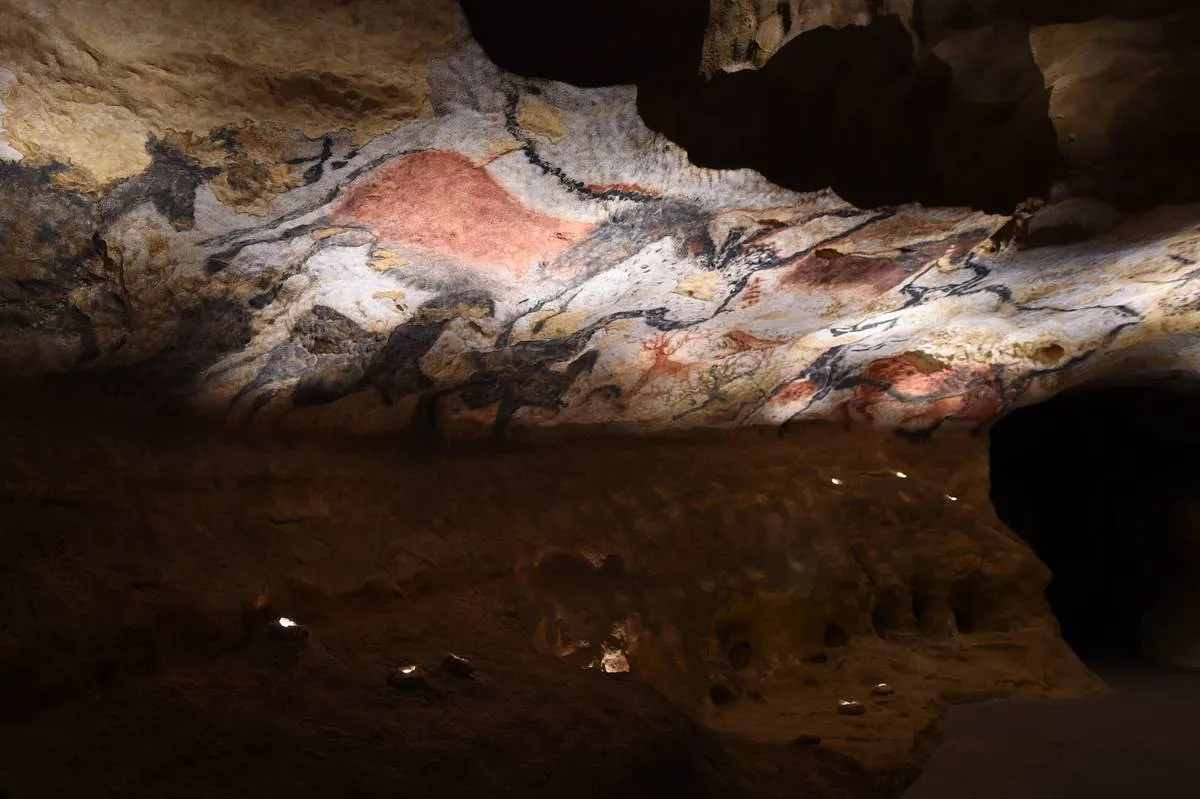
In September of 1940, one of the biggest accidental findings took place. Apparently, four French boys and their dog made the immaculate discovery of the Paleolithic illustrations. There are different versions of the story but the main points include Jacques Marsal, Marcel Ravidat, Georges Agnel and Simon Coencas coming across a hole in the ground in the woods. The painting is from 15,000 to 17,000 years old and the four of them and their dog just happened to stumble upon a fascinating timeless artifact. Did they really have a dog with them? How many other versions of the story is there?
The Four Frenchmen
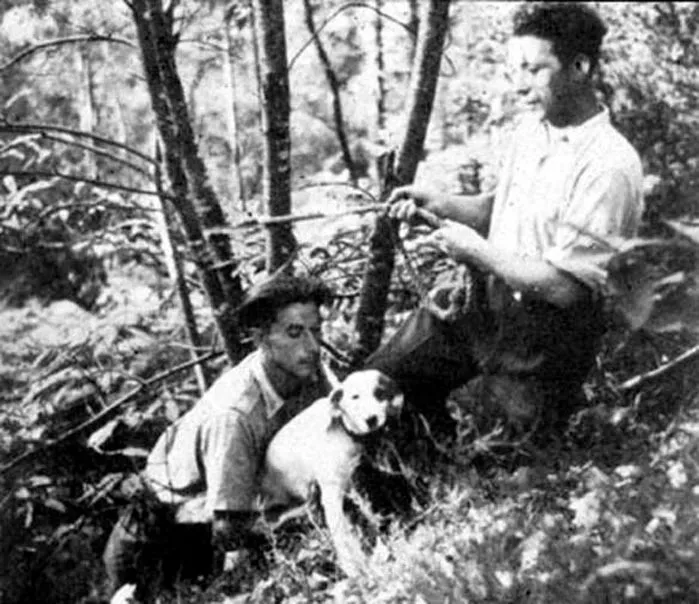
It is said the four boys had a dog with them named Robot and it was chasing a rabbit into a hole. The other story is that one of the boys, Ravidat, found the hole first and took the rest of the guys back to see it for themselves at a later date.
The local legend was that there was a hidden tunnel that led to a buried treasure so the boys thought this had to be it. We aren't sure if they appreciated this finding as much as they would have a buried treasure but finding a piece of history is pretty special as well.
Testing The Waters

The boys had some wit to them, clearly. Before thrusting themselves into this mysterious hole, they dropped stones in it to gauge how deep it really was. After that, they each took a plunge into the hole cautiously as the shaft was very narrow. It continued on for about 50 feet to a cave where the walls were covered with the amazing paintings. Marsal later admitted that traveling through the hole was extremely frightening but finding the paintings were worth the minor fear. His words were that the paintings "seemed to be moving."
Making A Profit

Naturally, the boys were worried about how they were going to get out the 50-foot hole but with some extra help from their elbows and knees, they were able to escape the secret cave. Now, if you and three of your best buddies were to find something of this magnitude, what would you four do?
The group promised each other to keep their finding a secret and explore it again the next day. Too excited, they chose to show it to friends but for a small admission fee, of course.
Call The Teacher

Like a brush fire turned to forest fire, word spread quickly about this discovery and the boys had to do something. They decided to consult their school teacher, Leon Laval, who happened to be a member of the local prehistory society.
Not a naive one, Laval thought this was some type of trap to get him stuck in the deep hole but once he went down and witnessed the paintings, he was sure they were prehistoric. He also asserted that no one should be allowed to touch the paintings and for them to be guarded to prevent vandalism.
Until Death Do Us Part
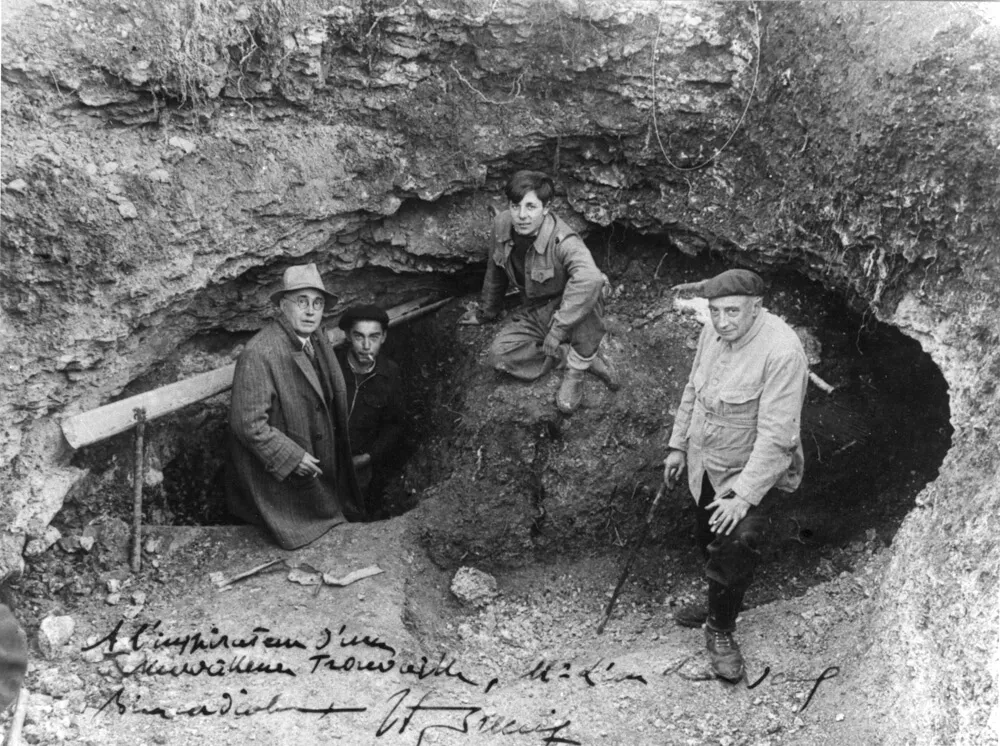
At this point, the youngest of the boys, Marsal (was 14 at the time) decided to take it upon himself to be the guard. He asked his parents or rather persuaded them to allow that he build a tent right by the entrance. He wanted to do this not only to be the guard but to also show future visitors around. This would be the start of something that Marsal would do until his death in 1989. A discovery like this is once in a lifetime so for him to revolve his life around it is completely understandable.
Enter, Abbe Breuil

As word of this discovery started to make its rounds, it eventually reached Abbe Breuil. Breuil was a prominent prehistorian who was able to properly vouch for the authenticity of the paintings (no offense school teacher Laval). Once he vouched for them, the news spread even faster and all across Europe and soon throughout the whole world!
In 1948, the family who owned the land began organizing daily tours that soon brought in thousands of tourists and visitors annually so they could see the beauty in person.
More Than Just Wall Paintings

The main hole where the boys found the painting wasn't all there was down there. There were, even more, paintings in other parts of the cave separate from the main entrance. The other paintings found confirmed the discoveries from the previous paintings found.
This means that unlike other animals, the very first humans believed in art, magic and religion. Like the Egyptians, they buried the dead nicely with items to take with them to the next life. They also thought there was a great mother goddess who was the source of all life.
Just What Were The Paintings?

We're sure you're wondering what type of animals were on this spectacular wall. Interestingly enough, there were some extinct animals illustrated just to give you an idea of how long ago these were painted.
"The paintings convey this. Dated to about 15,000 bc, though they may have been created over a longer period than formerly realized, they show bulls of the now extinct aurochs species, oxen, horses and stags as well as arrows and traps," HistoryToday reported. "Early humans were hunters and one of the purposes of the paintings may have been to bring about successful hunting in real life."
Visitors Bring Accidental Damage

It's always terrible when something gets messed up even when you aren't intending for that. That is what happened with this cave. The visitors made for a bad environment and brought forth steady damage.
"The thousands of visitors to Lascaux did not mean to harm the paintings, but they did, simply by breathing on them," reported HistoryToday. "The occasional visitor fainted because the atmosphere was so thick. Condensation formed on the walls and ceilings, moisture ran down the paintings and lichens and mold developed. High-powered lighting added to the damage and the paintings began to fade."
A Boy And His Goat

In 1947, a group of teenage goat and sheepherders were out tending to their flock near the city of Jericho. It was a typical day, until one of the goats got lost and one of the boys in the group went to go look for it. At some point, the boy came across a cave and decided to throw a rock into it. The cave quickly responded back with the sound of a pot breaking. Potentially worried that he may have accidently attacked someone’s home, the boy went in to investigate, and soon discovered a collection of papyrus scrolls. Being teenage boys with no idea of what it was that they discovered, they sold the scrolls to antique dealers at a rate of less than $50 for the collection.
Don't Forget The Rocks

What the teenage boys didn’t know at the time was that they accidentally stumbled upon what is considered by some to be one of the greatest archeological discoveries of the 20th century. They found some of the earliest parts of one of the oldest text in history. They found The Dead Sea Scrolls from the bible. Valued at millions just for mere tears of a scroll, the boys not only got the short end of the stick, they also inadvertently inspired many archeologists to come check out the area, leading to the discovery of several other artifacts. So, next time your goat gets loose, give him a head start, and make sure you bring a few rocks!
Holes
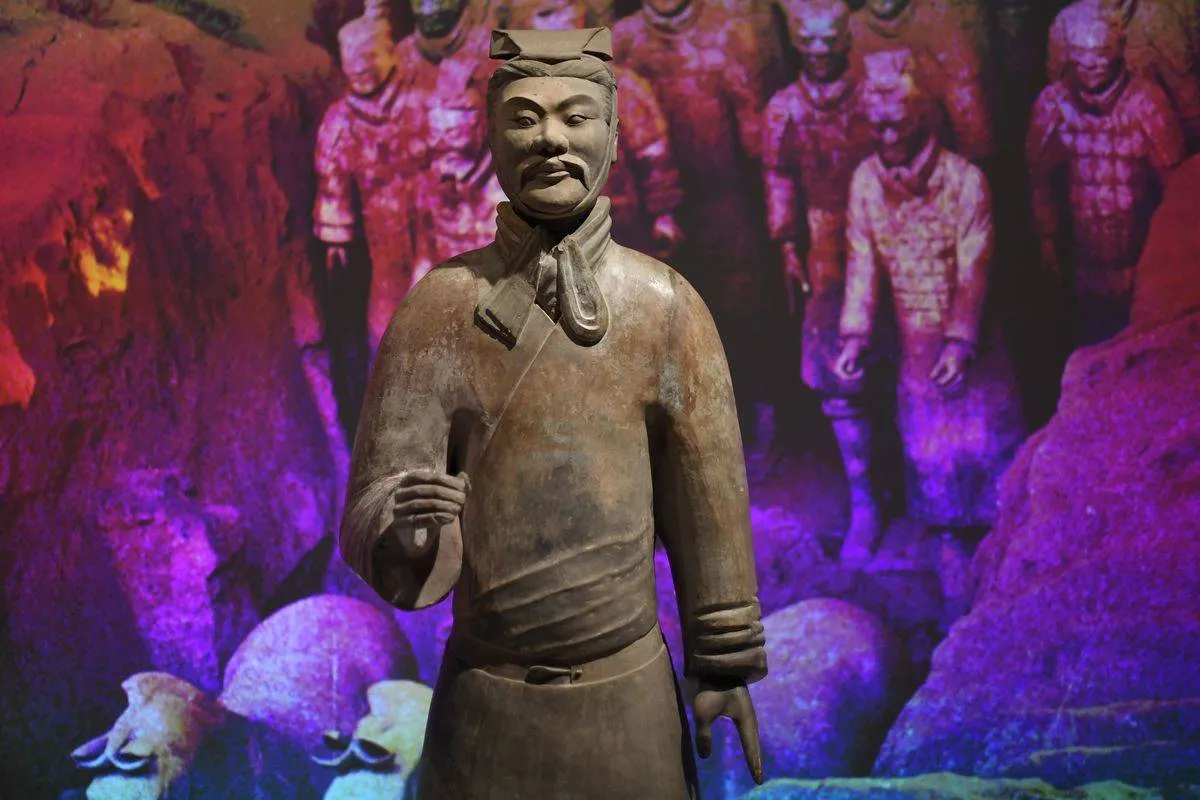
Imagine digging a well, and then becoming an overnight celebrity! That’s pretty much what happened to a group of seven Chinese farmers near Xian in 1974 when they accidentally discovered the tomb of emperor Qin Shi Huang. This discovery was a big deal because the Qin Shi Huang is credited with unifying China by standardizing language, communication and currency. Empower Qin established national roads and is the leader behind taking China’s state walls and bringing them together to create what we know of today as The Great Wall of China. Until this day, the tomb is considered to be one of the most important discoveries in Chinese history.
All's Well That Ends Well
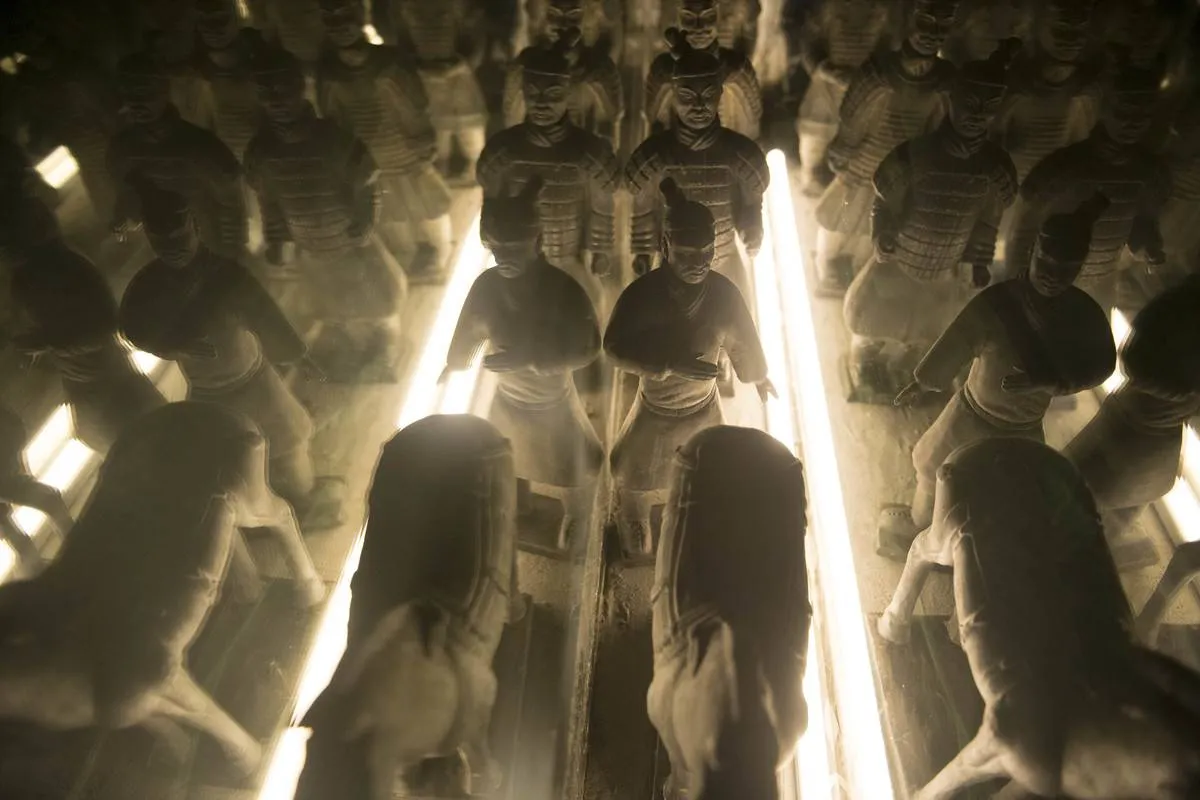
When the men began digging for their well, they were surprised to find the head of a statue lying in the dirt. It wasn’t long before archeologist jumped on this and soon discovered how massive the discovery these seven men made actually was. Around Eight thousand life-sized Terracotta soldiers, chariots, and horses statues were discovered. One notable thing about the soldiers, is that no two soldiers were the same. Each had their own unique facial features. The soldiers were said to serve the purpose of protecting emperor Qin in the afterlife, but archeologist have reported that nonmilitary statues have been found as well.
Deep Ship

Digging to construct what would eventually become a parking garage, excavators at the site of the world trade center in 2010, were surprised to find the remnants of a wooden ship twenty-two feet below street level. As the ship is made of Timber, historians have dated the ship and believe it is from 1773 Pennsylvania as Timber was a popular building material at that time and the use of tree-ring dating. Currently, there are plans to eventually put the ship on display in a Museum in New York, but their whereabouts of the ship since it has been excavated is currently unknown.
Not The Sorcerer's Stone

While working on a French fort near the town of Rosetta during the year of 1799, soldiers In Napoleon Bonaparte’s army happened upon a slab of basalt while knocking down walls. Luckily Napoleon brought scientist and historian along to watch him fail in Egypt, because his team was rapidly able to date the stone all the way back to 2nd century B.C and determine that the writing upon the stone was in three different languages. Greek, Demotic, and Hieroglyphics. Currently, the Rosetta stone is on display at the British Museum and has been since 1802 sans a brief period during World War 2 where it was taken underground to protect it from potential bombings.
What's In Your Basement?

Michael Rorrer’s aunt had recently passed away and he was doing what many would consider an honorable deed in clearing out her home for her after her passing. It sounded like it was a fairly routine cleaning until Michael stumbled upon a bundle of 345 mint condition comics neatly stacked in a basement closet. Michael took note of them, but had no idea that they were worth anything. There were Superman, Batman, Captain America and Human torch comics, but that still didn’t mean much to him. It wasn’t until Michael started talking casually about the collection to the people in his everyday life, that Michael started to suspect that he might be in possession of something special.
The First Hero

Two of the most talked about comics in Michael’s collection are his Action comics issue one and his detective comics number twenty-seven. Action Comics number one debuted in June of 1938 and featured the very first appearance of the ever-popular Superman. This comic is considered to be the starting point of the superhero genre and to many, and because of this, it is regarded by many to be the most valuable comic book ever published. Michael Rorrer’s copy sold at auction for $299,000, but as of 2014, a pristine condition copy of this same comic was sold for $3,207,852 on eBay. Action comics issue one is currently the only comic to have ever sold for over three million dollars.
At Least Batman Is Unique
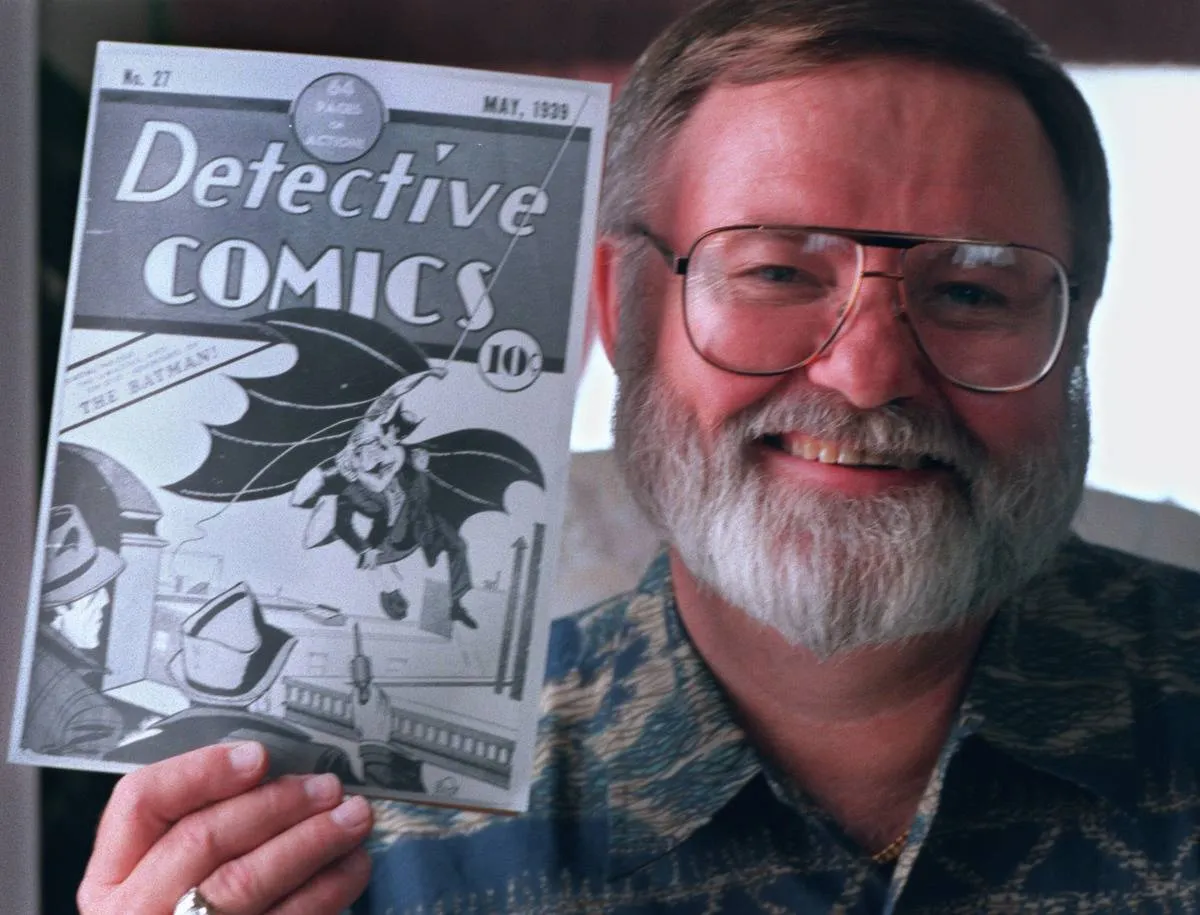
Perhaps the most valuable comic for Michael Rorrer at the time of sale, was his 1939 copy of detective comics number twenty-seven. This was the issue that first introduced Batman and at auction, this comic sold for a grand sum of $523,000. Apparently, as a young boy, Michael’s uncle Billy Wright really had a thing for comics. He was a true collector, and over time he built his collection up with no idea that they would be worth this much someday. Billy ended up amassing what would eventually be known as the rarest comic collection ever assembled. Today reports, “The collection includes 44 of The Overstreet Comic Book Price Guide's list of top 100 issues from the Golden Age of comic books: the late 1930s to the late ’40s.”
How To Become A Millionaire

In 2012, most of the comic book collection was sold and earned Michael a whopping $3.5 million at auction. That’s quite a sizeable profit considering Michael’s uncle Billy initially bought the comics at only ten cents apiece. Billy Watson passed at the age of sixty-six and according to Michael Rorer, Billy never mentioned his massive comic book collection to him or his brother Jonathan Rorrer. In recollection, Michael mentions that the only time he had heard about his uncle’s collection, was when his aunt lightly mentioned that her husband Billy had a few comics when she discovered Michael and his brother had an interest in comic books.









